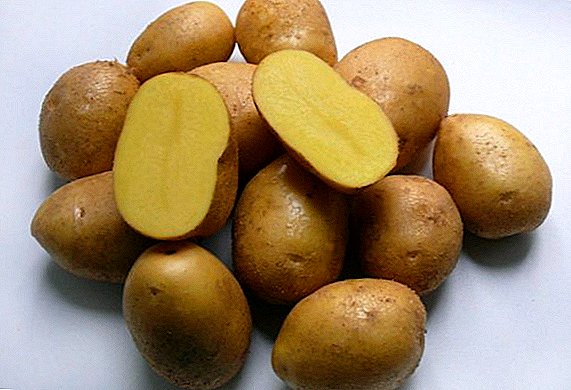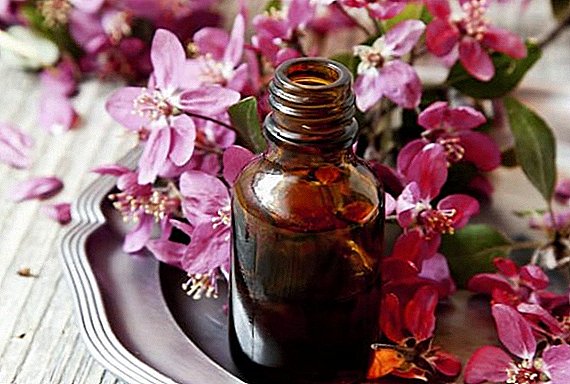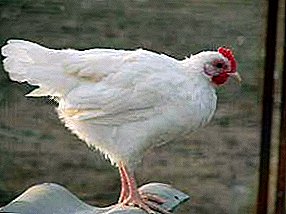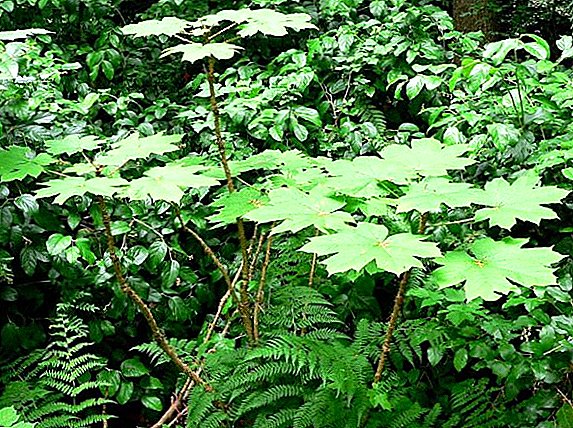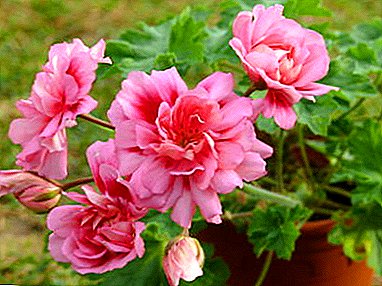
Begonia is a plant of the Begonian family, whose homeland is tropical and subtropical regions of Asia, Africa and America.
Thanks to the work of breeders, all lovers of home plants can enjoy these beautiful flowers.
How to care for begonia so that it pleases with an abundance of beautiful buds and what to do if it does not bloom?
We will talk more about this topic later in the article, and also tell you how to make a plant form buds.
When does flowering begin and how long does a given period last?
Blooming begonia can not go unnoticed due to the large number of inflorescences. The most common species of this plant bloom on average from May to November, but in general, the duration and flowering time depends on:
- Plant varieties. Terry large-flowered species bloom less than others.
- Growing method. In open ground, the flowering period is limited due to weather conditions and the need to transplant into the house. At the same time, there are species that bloom until spring in the pot.
- Care. It is necessary to create comfortable conditions and provide proper care, otherwise the flowering will be short-lived or not at all.
- Waking time. If you start to engage in the awakening of the plant from the state of rest in late February, the flowers will appear in April-May.
- Root system view. Begonia with a tuberous root system blooms in the summer-autumn period, with the usual - almost year-round.
Features of the process, what happens to the indoor plant at this time?
The main feature of begonias is the presence of sex flowers. Female flowers with pistils differ from male ones with stamens by the presence of a bulge (future seed pod) from the back side. After the plant has left the state of rest, it begins to accumulate forces and useful substances for future flowering.
Buds are laid, reproductive organs are formed. When the begonia is ready for breeding, male and then female flowers bloom (you can find out about the signs of male flowers on the plant, as well as the varieties of begonia, here).
If the plant is pollinated, the male flowers wither, and in the female the fruit-box with seeds begins to ripen. At this time, the plant is most active - it consumes a lot of nutrients and trace elements and needs a lot of water, light and heat. How to grow and care for room begonia, so she was beautiful and healthy, we told in our material.
How does the bloom: photo
Begonia has a rich, bright flowering and a variety of flowers.: from small and simple to large and terry (about the types of annual and perennial begonias, as well as useful tips on how to care, read here). Flowering begins when parts of the flower become available and free for pollination. After that the multicolor or monophonic flower is dismissed.
For longer flowering, the plant should be fed with potassium nitrate solution, and then weekly with complex mineral fertilizers. Also, for longer flowering, faded flowers must be cut off (how to cut begonia for lush flowering correctly, read in our material).





The necessary conditions
For flowering begonias at home, you must comply with a number of conditions:
- lack of drafts - The plant must be protected from the wind;
- humidity - begonia needs high humidity, but it can not be sprayed, because of the water that fell on the leaves, they form brown spots;
- comfortable temperature - in summer, the temperature should be + 21-23 degrees, in winter - + 15-18 degrees;
- watering - it is necessary to water the plant constantly in small doses, pour out excess water from the pan;
- ventilation - for the normal development of begonias, the flow of fresh air is necessary;
- lighting - it is a light-loving flower, which requires a bright but diffused light;
- top dressing - during active growth of leaves and shoots, the begonia needs to be fed with mineral fertilizers with a high content of potassium, to stimulate flowering with complex fertilizers for flowering plants;
- suitable soil and pot - the soil should be peat, hardwood or garden, with the addition of sand in proportions of 1: 1, and the pot - clay;
- rest period - if the begonia does not rest, it will not have the strength to bloom (how to care for the begonia during the rest period and prepare it for awakening, read here).
Why does not dissolve and gives only foliage?
It happens that the room begonia lacks flowering. There are several reasons for this:
- Type of plant. On decorative and deciduous varieties, inflorescences are not formed.
- Age. For the appearance of flowers, you must have at least 5 rings on the main stem.
- Wrong lighting. Do not place the plant in direct sunlight or in the shade.
- Dry air. Begonia does not bloom in a room with dry air.
- Unsuitable temperature conditions. When the temperature is too high or low, as well as when it fluctuates, the plant experiences stress.
 No rest period. During the rest of the begonias laid buds that bloom in spring.
No rest period. During the rest of the begonias laid buds that bloom in spring.- Cold air. The plant should not be in a draft.
- Nutrient Shortage. In the absence of dressings tuber will not develop and the flowers will fall off.
- Wrong watering. Because of the overmoistening of the soil, the root system may rot, and if there is a shortage of water, the leaves of the begonia shrink, the buds die off (read here why buds, leaves fall and how to save begonia)
- Presence of nitrogen in fertilizers. This element stimulates the development of green mass of the flower, which damages the formation of inflorescences.
- Pests. They damage the stems, leaves, suck the juices from the plant.
- Burnt roots. This is due to excessive fertilizer, temperature changes, direct sunlight on the plant.
Attention! A sign of insufficient air humidity - dry tips of begonia leaves. In time to identify the cause of the lack of flowers in begonias, you can change the care and achieve a positive result.
Further, an informative video about the reasons for the lack of flowering in begonias:
How to make a plant to make buds?
- Before the onset of the required age, flowering can be provoked by using growth stimulants.
- Provide good lighting by placing the plant on a southeast or southwest window sill, additionally illuminate when a sunny day is short.
- Increase the humidity of the air using a spray bottle, a container of water or a damp cloth on the radiator. You can also put a flower on an inverted pallet, and the resulting design - on a larger pallet, around the circumference of which it is necessary to pour the clay and moss and periodically sprinkle them with water.
- Place the begonia in a warm place, exclude temperature fluctuations and drafts.
- Send begonia for a period of rest, for which you need to reduce lighting, cover it with an opaque towel, reduce the temperature to +17 degrees, gradually reduce watering. After three months of rest, smoothly increase the amount of moisture and light, move to a warm place.
- Eliminate the presence of parasites, constantly inspecting the plant, if necessary, treat the flower with a fungicide. Most often, begonia affects spider mite, weevil and aphid.
- Fertilize begonia with a complex of minerals, eliminating nitrogen.
- Introduce irrigation mode, drain excess water from the pan, make sure that the soil does not limp and dry.
- Carefully follow all rules for the care of begonia, so that the plant was healthy and flowering.
Before looking for a method capable of causing the begonia to bloom, it is necessary to determine the reason for the absence of buds.
How to care at home?
To bloom begonias at home, it is necessary to ensure her proper care:
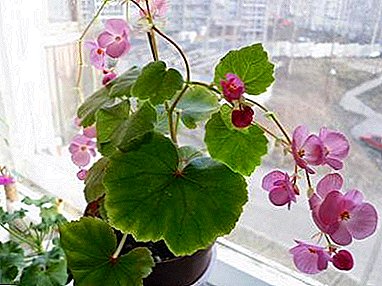 Choose a place with a comfortable temperature of up to +23 degrees and suitable lighting - not in the shade or under the rays of the sun. In addition, the pot should not be positioned so that it is purged from all sides, a strong wind can break the fragile shoots of the tuberous begonia.
Choose a place with a comfortable temperature of up to +23 degrees and suitable lighting - not in the shade or under the rays of the sun. In addition, the pot should not be positioned so that it is purged from all sides, a strong wind can break the fragile shoots of the tuberous begonia.- On hot days, you need to water the begonia plentifully, but avoid stagnant moisture in the pot. In winter, watering should be reduced, and the tuber varieties should not be watered at all by placing tubers in peat. Water for irrigation must be settled.
- Provide a high level of humidity in the room.
- For long flowering and the formation of large buds, begonias need fertilizers, which should not contain chlorine and should contain magnesium, phosphorus, iron and calcium. Feed the plant to be monthly, during the flowering period - 3 times a month.
- Begonia needs to be transplanted in the spring and only as needed - if the pot was small (how to transplant begonia and how to care after the procedure, you can find out here).
Important! Do not move the begonia from place to place - it will destroy the change of lighting and temperature.
We offer for viewing a useful video about the features of growing begonias at home:
Begonia is a beautiful plant that can decorate any room. Providing her with comfortable conditions and good care, she will long please flower growers with her beautiful flowers.


 No rest period. During the rest of the begonias laid buds that bloom in spring.
No rest period. During the rest of the begonias laid buds that bloom in spring. Choose a place with a comfortable temperature of up to +23 degrees and suitable lighting - not in the shade or under the rays of the sun. In addition, the pot should not be positioned so that it is purged from all sides, a strong wind can break the fragile shoots of the tuberous begonia.
Choose a place with a comfortable temperature of up to +23 degrees and suitable lighting - not in the shade or under the rays of the sun. In addition, the pot should not be positioned so that it is purged from all sides, a strong wind can break the fragile shoots of the tuberous begonia.
